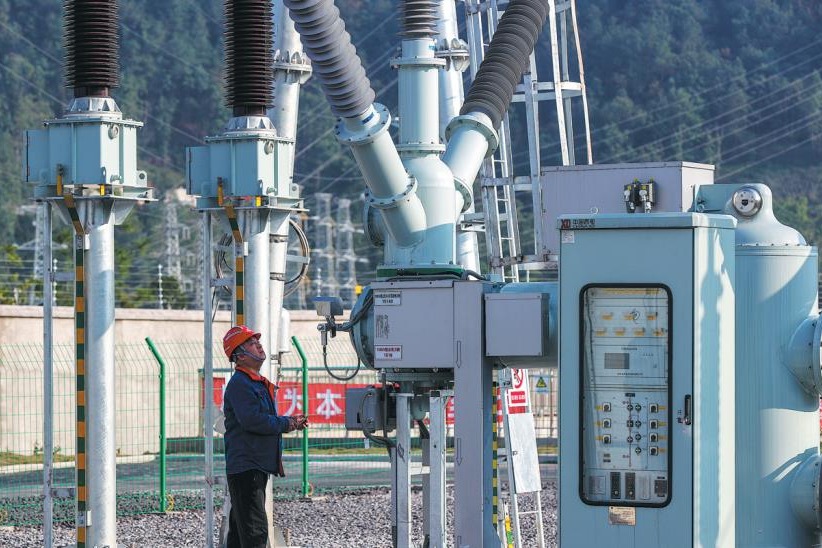Stimulus package unveiled to bolster support for growth
Measures: Rate cuts may continue in second half

China's new financial stimulus package reflects policymakers' strong resolve to stabilize the domestic economy and financial markets amid ongoing tariff-related pressures, paving the way for greater monetary and fiscal actions to shore up domestic demand and confidence, economists and analysts said.
The package, unveiled on Wednesday, includes interest rate cuts, liquidity injection and targeted funding for consumption and technological innovation, and is aimed at strengthening credit expansion, anchoring investor expectations and boosting capital market resilience.
With the measures indicating that policymakers are taking a proactive stance to brace for worst-case scenarios, additional tools are likely to be in the pipeline, including bolder cuts to interest rates, stepped-up fiscal support for consumption and trade-affected businesses, and the potential launch of a formal stock market stabilization fund.
The People's Bank of China, the country's central bank, announced on Wednesday that it will cut the seven-day reverse repos — a key policy benchmark for interest rates — by 10 basis points to 1.4 percent from 1.5 percent, effective on Thursday.
Pan Gongsheng, governor of the PBOC, said the reserve requirement ratio, or RRR — the proportion of deposits that banks must keep as reserves — will be reduced by 0.5 percentage point, unleashing liquidity of around 1 trillion yuan ($138.5 billion). The cut will take effect on May 15.
Speaking at a news conference, Pan announced a raft of targeted monetary support, including lowering the RRR for auto financing and financial leasing companies to zero from 5 percent and reducing interest rates by 25 basis points on housing provident fund mortgages and various structural monetary instruments.
The central bank will launch two new tools to provide funding for services consumption and eldercare, as well as tech innovation bond investments, Pan added.
David Chao, global market strategist for the Asia-Pacific region (excluding Japan) at investment management company Invesco, said, "The rate cuts are likely to reduce borrowing costs in the real economy and give credit growth the boost it needs."
"The combined package of measures — similar to those in September — demonstrates that policymakers remain committed to prioritizing (economic) growth," Chao said.
With the policies coming before the planned China-US trade talks later this week, Wang Qing, chief macroeconomic analyst at Golden Credit Rating International, said the PBOC is likely to continue with interest rate cuts and RRR reductions in the second half, as negotiations may go through a complex process while inflation remains subdued at home.
China's A-share market reacted positively to the measures, with the benchmark Shanghai Composite Index rising 0.8 percent to close at 3,342.67 points on Wednesday.
Pan added that the central bank will provide sufficient funding support to Central Huijin Investment, an arm of China's sovereign wealth fund that functions as a quasi-stock market stabilization fund, in increasing share holdings when necessary.
Zhang Jun, chief economist at China Galaxy Securities, said it is also necessary for China to launch a formal stock market stabilization fund via legislative procedures, especially amid rising global financial market volatility, to further anchor market expectations.
Zhang added that as the RRR for some institutions will be cut to zero — breaking through the previously assumed implicit floor of 5 percent — there is now greater room for reducing the RRR of commercial banks, with a 50-basis-point cut likely in the third quarter to coordinate with incremental fiscal stimulus.
Lu Ting, chief China economist at Nomura, said China needs to take bolder steps — especially on the fiscal front — to clean up debt in the property sector and support consumption by reforming the pension system.
Li Yunze, head of the National Financial Regulatory Administration, said that China will accelerate the rollout of financing mechanisms aligned with its new development model of real estate.




































